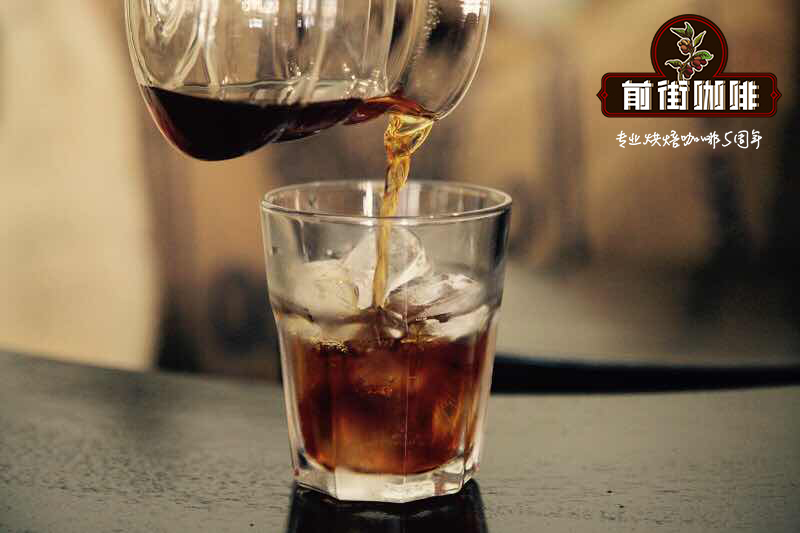What is the third wave of boutique coffee? what is the impact of the wave of boutique coffee on our coffee drinking?

Professional coffee knowledge exchange More coffee bean information Please pay attention to coffee workshop (Weixin Official Accounts cafe_style)
The concept of 3rd Wave coffee emerged around 2000 and has spread around the world in recent years. In summary, people's pursuit of coffee has become the same as wine, and they will study the details of origin, roasting and brewing, resulting in familiar terms such as "specialty coffee","Hipster coffee" and "artisan coffee".
However, what is the third wave of coffee shops, and what is a cup of "fine coffee"? Walk into Bath, an ancient city famous for its Roman baths, to find out.
In an obscure doorway on a sparsely populated street lies Colonna & Smalls, England's hottest coffee shop, whose baristas have been in the top three of many British and international baristas or flower pulling competitions over the years. The store offers both espresso drinks and filtered coffee. Espresso base is Italian, dark, bitter espresso with milk and sugar. To make a fine coffee, it depends on how skillfully the barista uses this equation.
Order a Latte at Colonna & Smalls and the barista will ask you to choose from three different origins of coffee beans to make your espresso, which will be blended with steamed milk at 80 degrees Celsius according to the natural sweetness and acidity of the coffee itself. In the past, the temperature of steamed milk was strictly controlled because the protein in fresh milk was damaged due to excessive heating, which highlighted the bitterness. Sugar can destroy the balance of coffee flavor, so baristas also recommend that guests do not add sugar when tasting.
Barista in the brewing process are carefully calculated, in order to master the quality of coffee, but also will use their own roasted coffee beans, pay attention to very much.
For filtered coffee rehabilitation! Unmasked original flavor
Colonna & Smalls reminds customers that what can be considered the best coffee in the world is filtered coffee, because customers can drink the essence of coffee without milk or milk foam to distract taste buds. Drip coffee aroma and complex taste, let it onto the third wave of coffee stage.
To understand how the third wave of coffee craze formed, we need to first understand the origin of the second wave. In the 1960s, Peet's and Starbucks, two chain coffee shops in the United States, were founded in 1966 and 1971 respectively. They basically brewed a variety of coffee drinks with espresso. They were delicious and changed the stereotype of coffee. Starbucks has developed into the largest chain coffee shop in the world after nearly half a century. espresso, latte, etc. are popular all over the world. The convenience of launching them is installed in supermarkets and becomes the representative of the second wave of coffee.
Competition between giant chain enterprises and small shops in fine coffee market
The second wave of commercialization and chain hegemony paved the way for the third wave of coffee. Independent shops such as Intelligentsia in Chicago and Stumptown in Portland appeared in the mid-1990s. They collected the best coffee beans and paid attention to fresh roasting and brewing skills. They sold not only a cup of quality coffee, but also an ingenious experience, attracting young people to queue up and becoming the pioneer of the third wave.
Peet's, a coffee veteran, saw the potential of third-wave coffee and bought Intelligentsia and Stumptown last year. Some people think that the difference between the second wave and the third wave of coffee is only "money", which is aimed at those who can afford to pay a new market. However, as soon as news of Peet's acquisition of Stumptown spread, many Wenqing fans complained: "This is a sad day, another Starbucks story, good for the owner, but bad for the quality of the coffee." Regular customers are worried that Stumptown's quality will decline, but there is also a reason behind it-a feeling of betrayal.
Debbie MacInnis, a marketing professor at the Marshall School of Business at the University of Southern California, explains that people love small stores, sometimes based on their small size,"We like to support the underdog, and we see ourselves as weak, so it's natural to associate with brands." This is especially true for Wen Qing, who goes to the small shop to taste coffee and also contains a mentality of eliminating the strong and helping the weak. Starbucks, the leader in the coffee world, also entered the boutique coffee world two years ago, opening a roasting tasting room in Seattle, and opening these Starbucks Reserve stores in Hong Kong for the sixth time, serving hand-brewed coffee with water and biscuits. Barista will explain carefully, and pay coffee small information, the price is also relatively high, want to share a piece of the fine coffee market, unknown whether to win the favor of a crowd of coffee fans.
Coffee as a drink and the industry as a whole has evolved significantly over the past century, from a monotonous refreshing drink to a boutique drink loved by people around the world. Fine coffee may not escape chain, but finding a secluded shop for a cup of flavored coffee is often the fun. It is undeniable that under the third wave, the coffee industry is in its golden age of development. For consumers, there are undoubtedly many choices. Whether they want to have a caffeine fix in the morning in a hurry or feel slow, they can get what they want.
Important Notice :
前街咖啡 FrontStreet Coffee has moved to new addredd:
FrontStreet Coffee Address: 315,Donghua East Road,GuangZhou
Tel:020 38364473
- Prev

Coffee and Science: exploring the Origin and Coffee Flavor from a Chemical Perspective
Professional coffee knowledge exchange more coffee bean information please follow the coffee workshop (Wechat official account cafe_style) where is your favorite coffee producing area? Brazil, Kenya, Ethiopia? Why do you care which country the coffee comes from? There is probably an important reason because the same variety of coffee has different chemicals according to where it grows.
- Next

Drinking instant is not "real coffee"? Don't be fooled by the chain of disdain!
Professional coffee knowledge exchange more coffee bean information please follow the coffee workshop (Wechat official account cafe_style) in the past two years, the acceptance of coffee in China is becoming higher and higher. It can be seen from the proliferation of chain coffee shops and independent cafes. We, who used to know the word coffee only at the instant or even Starbucks level, have now learned to hug.
Related
- How did the Salvadoran coffee industry develop in Central America?
- What exactly does the golden cup extraction of coffee mean?
- The Origin of Coffee flower
- [2023 Starbucks World Earth Day] there are more meaningful things besides free Starbucks coffee!
- What kind of coffee is there in Spain? 9 Flavors of Spanish Coffee
- Aromatic African coffee| Kenya's coffee culture and historical production area
- Liberica Coffee Bean knowledge: the characteristics of Liberian Coffee beans of the three original species of Coffee beans
- The origin and formula of Spanish latte introduces the taste characteristics of Bombon coffee in Valencia, Spain.
- How to adjust the solution of over-extracted coffee
- What is the tasting period of coffee beans? What is the period of coffee and beans? How should coffee wake up and raise beans?

